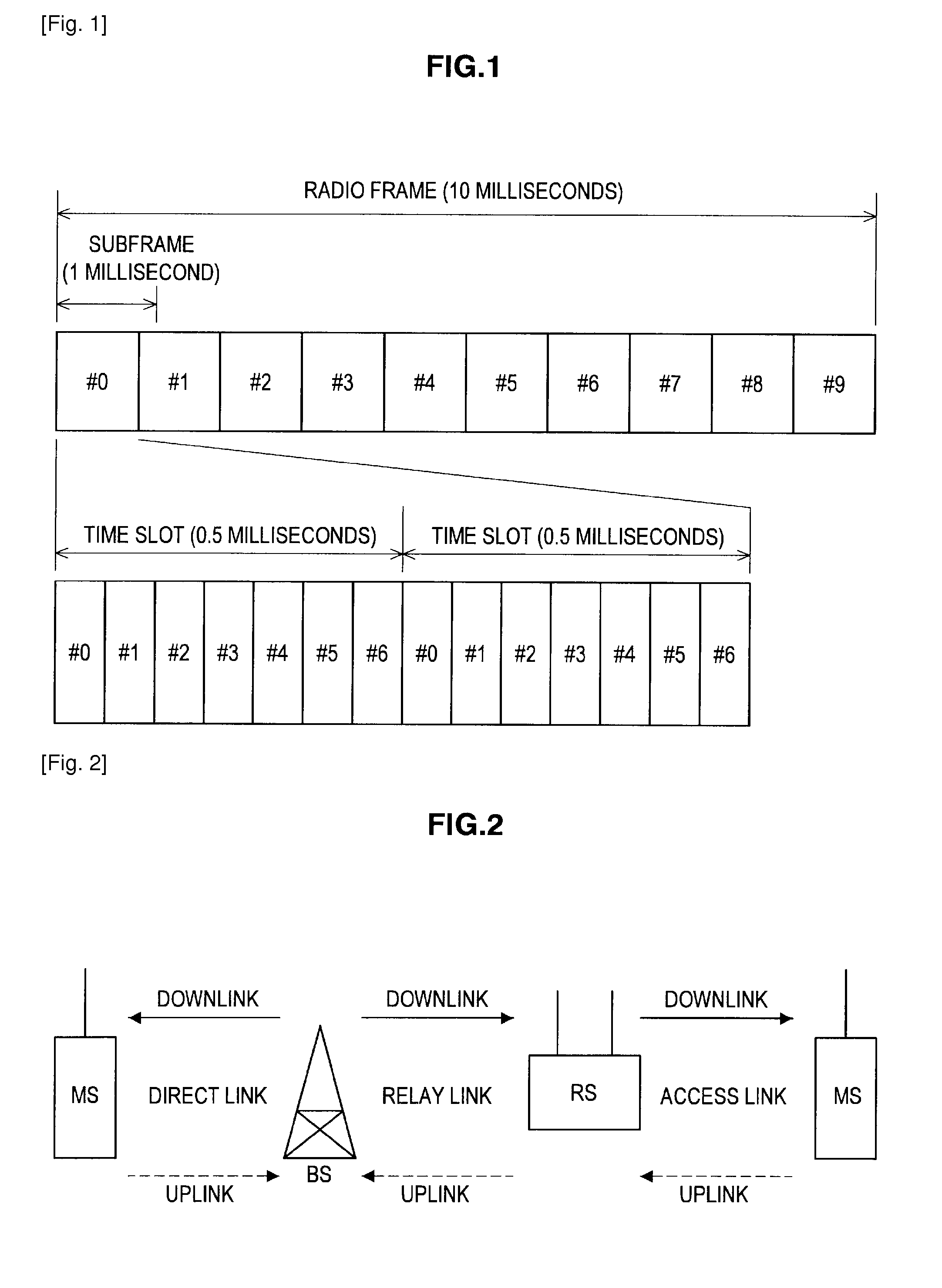Communication system, communication apparatus, communication method and computer program
- Summary
- Abstract
- Description
- Claims
- Application Information
AI Technical Summary
Benefits of technology
Problems solved by technology
Method used
Image
Examples
Embodiment Construction
[0099]An embodiment in which the present invention is applied to a mobile communication system such as LTE will be described in detail with reference to drawings.
[0100]FIG. 1 shows a radio frame configuration of a downlink of LTE. As illustrated in FIG. 1, a radio frame is composed of three hierarchical layers of a time slot (Slot), a subframe (Subframe), and a radio frame (Radio Frame) in descending order of time unit.
[0101]A time slot of 0.5 millisecond is constituted by seven OFDM symbols (for normal unicast transmission) and becomes the unit of decode processing when received by a user (mobile station). A subframe of 1 millisecond is constituted by two consecutive time slots and becomes the unit of transmission time of a correction-coded data packet. A radio frame of 10 millisecond is constituted by 10 consecutive subframes (that is, 20 time slots) and becomes the basic unit for multiplexing of all physical channels.
[0102]Each user can perform communication without mutual interf...
PUM
 Login to View More
Login to View More Abstract
Description
Claims
Application Information
 Login to View More
Login to View More - R&D
- Intellectual Property
- Life Sciences
- Materials
- Tech Scout
- Unparalleled Data Quality
- Higher Quality Content
- 60% Fewer Hallucinations
Browse by: Latest US Patents, China's latest patents, Technical Efficacy Thesaurus, Application Domain, Technology Topic, Popular Technical Reports.
© 2025 PatSnap. All rights reserved.Legal|Privacy policy|Modern Slavery Act Transparency Statement|Sitemap|About US| Contact US: help@patsnap.com



